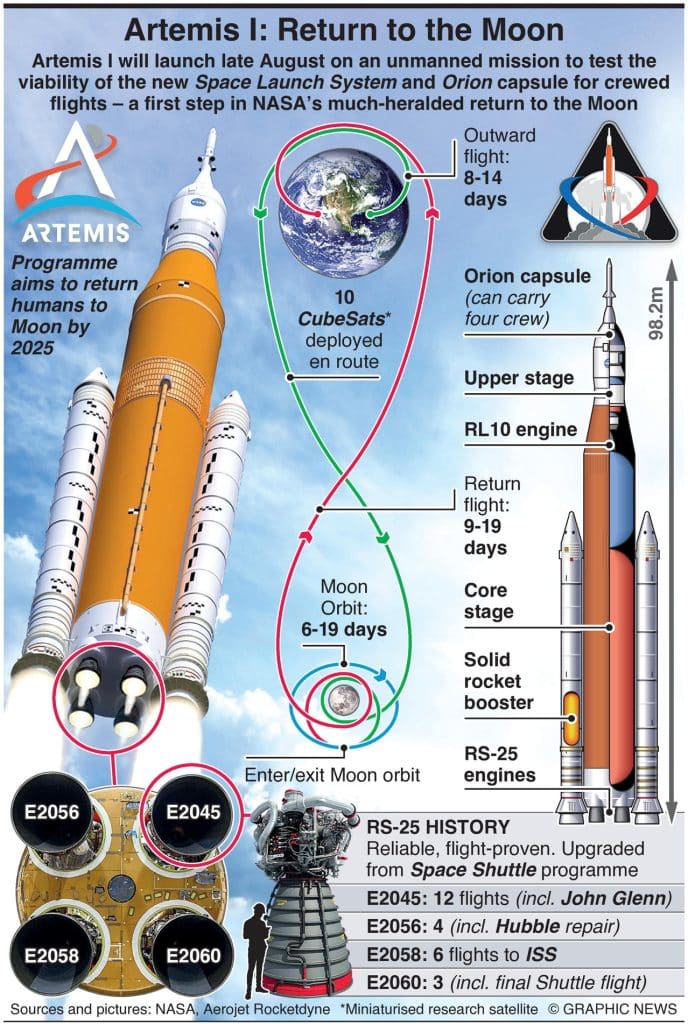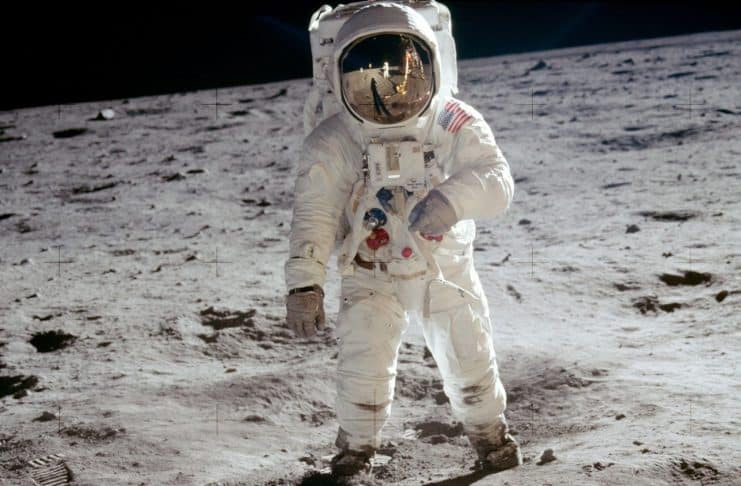The planned historic launch of the Artemis I test flight, the first step in taking humans back to the moon, has been delayed due to a technical fault with one of the engines.
It had been due to take off on August 29.
Former President Donald Trump signed his first presidential directive on space in December 2017, making it the official policy of the United States to return to the moon.
The long-delayed and much-criticized NASA Artemis will be an unmanned mission to test the viability of the massive new Space Launch System (SLS) rocket and Orion capsule for crewed flights – the first step in NASA's much-heralded return to the moon.
In 2019, Trump accelerated the NASA timeline by four years by making it the U.S. goal to land humans on the moon by 2024, rather than NASA's planned goal of 2028.
“That's just not good enough. We're better than that,” then Vice President Mike Pence said. “It took us eight years to get to the moon for the first time 50 years ago when we had never done it before, and it shouldn't take us 11 years to get back.”
While critics thought Trump's new goal was unrealistic, Pence pointed out similar criticisms of President John F. Kennedy's vision to land on the moon by the end of the 1960s.
As Politico reported:
“Some will say it's too hard, it's too risky, it's too expensive, but the same was said back in 1962,” Pence said in Huntsville, Ala., at the fifth meeting of the National Space Council — referring to the year when President John F. Kennedy gave his “we choose to go to the moon” speech.
Pence added:
Now as then, the United States has a president who is a dreamer, who understands that this is a challenge that once again we are unwilling to postpone and one we intend to win again.
Trump sought to push NASA beyond obsessing about using its own long-delayed SLS rocket, plagued by horrible cost overruns, to use increasingly powerful, cheaper and viable commercial rocket systems, which NASA has chosen not to do.
The new NASA timeline hopes to land Americans on the moon again by 2025 (one year past Trump's goal).
Once launched, the uncrewed Artemis I mission is due to last 26-42 days and can be summarized in the graphic below:

- Space Launch System (SLS) super heavy-lift launch vehicle blasts off from Launch Complex 39B at the Kennedy Space Center, Florida, carrying an empty Orion crew module.
- Solid rocket boosters and core stage separation – ship enters Earth orbit.
- Ship journeys to the Moon (8-14 days), deploying 10 CubeSats along the way.
- Enters into orbit around the Moon (6-19 days).
- Return flight to Earth (9-19 days).
- Crew module separation and splashdown in the Pacific Ocean.
If successful, Artemis II is scheduled to blast off in May 2024, with a crew of four astronauts, on a lunar-flyby-return-to-Earth test mission.
Assuming the success of Artemis II, Artemis III is set to land two people on the Moon in 2025 and keep them there for a week – making it the first human moon landing since Apollo 17 in 1972 (53 years ago). ALN
The opinions expressed in this article are those of the author and do not necessarily reflect the positions of American Liberty News.
READ NEXT: NASA Tests First-of-Its-Kind Planetary Defense System >>



NASA Administrators as Woke and corrupt as FBI.
Cant they land near Apollo & Surveyor sites??